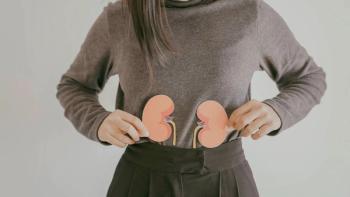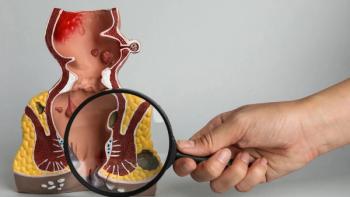
Necessity Is the Mother of Invention as a Breast Cancer Survivor
When innovation meets creativity, you never know what might happen, notably as a breast cancer survivor!
Greek philosopher, Plato, once said, "Necessity is the mother of invention." Though I've heard that saying since childhood, I never truly understood it until I became a teen. That's when I realized if I needed a solution to a problem, I could usually find a way to fix it. I've employed many techniques through the years to meet my needs, most of which have involved my love of crafting.
This morning, as I was unpacking from our recent move, I came across a set of hand-crocheted breast forms. I'd ordered the forms about nine years ago from an organization called "Knitted Knockers." The organization was formed to help survivors of breast cancer and other breast surgeries with free breast substitutes. Volunteers made the forms by crocheting or knitting breast forms that could be filled with polyester fiberfill. The forms could be easily adjusted to fit the recipient's needs by either adding or removing the amount of fiberfill in each form. It was a wonderful concept, and I really liked the fact that the volunteers were willing to give their time and energy to such a worthy cause.
Breast prostheses are very expensive, especially the silicone ones. Even with insurance, the forms can run hundreds of dollars. When my husband was working, it wasn't a problem but since he's retired, I've had to become more cost conscious.
Finding the forms in my drawer was a blessing, but I remembered there had been a problem with them when I initially ordered them. The polyester fiberfill was so lightweight, that the forms weren't heavy enough to weigh my bra down. That meant, with any movement, the bra would ride up and the forms wouldn't be in their proper place. Instead of being on my chest, where they should rightly reside, they would end up just beneath my collarbone and sometimes, under my chin!
In the past, I did try to find a way of weighing the forms, so they'd stay put. But nothing I tried worked well. I tried marbles, I tried birdseed, I tried Play-Doh stuffed into plastic baggies and tucked beneath the fiberfill. Besides being uncomfortable against my chest, the forms continued to shift and move.
But today, I had a new idea.
An older friend had given me a large bag filled with black beans. She'd received them from a government assistance program for those on fixed incomes. Since I don't usually cook dried beans, I'd let the bag sit in my pantry for a couple of years. I figured one day, I'd make the effort to cook them but never did. Since they were that old, I assumed they wouldn't be good for cooking and eating, but they might just be good for something else.
Taking the crocheted forms from my bedroom, I went into the kitchen and removed the fiberfill. It only took a couple of minutes to pull the stuffing out and pop it into the trashcan. I looked carefully at the forms. They'd been masterfully crafted and the volunteer who'd made them had even sewn on a small protective flap that could be tucked into the top of the form to hold in the contents.
With the flap up, the bag of beans on the counter, and a box of Ziplock bags, I got busy. I tried to guess how many beans to put in each form to make them even but also constitute the typical B cup I'd been before surgery to remove my breasts. It was nearly impossible to do it without a funnel. After spilling beans all over my kitchen floor, I took a few minutes to think. There had to be a better way.
I found a small plastic measuring cup that I used for measuring liquid Tylenol for my grandchildren. I emptied one form and guesstimated how many cups of beans I'd need. Eight tiny measuring cups seemed about right, so I put that exact amount in the plastic bag, zipped it up and tucked it in the breast form. Then I did the same for the other form. Placing a form in each hand, I weighed them against each other. They felt perfect!
I cleaned up my mess and took the forms into my bedroom. Pulling out a mastectomy bra, I slid a form in each of the breast pockets. Lifting the bra, I could tell the weight was sufficient and felt very similar to my silicone forms.
Slipping the bra on, I fastened the hook and paid attention to how the bra felt. It didn’t feel lumpy or uncomfortable. In fact, it felt much more comfortable than my old silicone forms. Hmm...maybe I was on to something.
Looking into the top of my pantry, I noticed several other bags of dried beans. I had green and red lentils, pinto beans, navy beans and chickpeas. Maybe the lentils would have been a little better than the black beans, but since I eat lentils fairly often, I didn't want to waste them on the homemade boobs, plus, it would have taken much more of the lentils to fill up each form.
I think my invention is pretty good. The plastic will keep the beans from sprouting with the heat of my body against them and keep them from escaping barring bumping into something sharp. The zipper on the bag should hold well, unless I failed to press it properly when sealing, so I should be good at least for a few months before I need to do a self-check.
Bean boobs, ha! How funny! Necessity is definitely the mother of invention, but you could also say survivors find ways of making things work, especially since many things related to cancer are so expensive.
I'm not ashamed to admit I did this. I'm sure there are others out there who are more inventive than I am. Maybe I'll discover an even better process in the future, but until then, my pantry will be my go-to source. My pantry is normally full, too. I'm a prepper at heart. But prepping doesn't just revolve around food, water and survival items like that. Women who've endured double mastectomies know we only have two choices: go flat or wear prostheses. I go flat most days, but when I want a little projection, beans work pretty well.
For more news on cancer updates, research and education, don’t forget to




